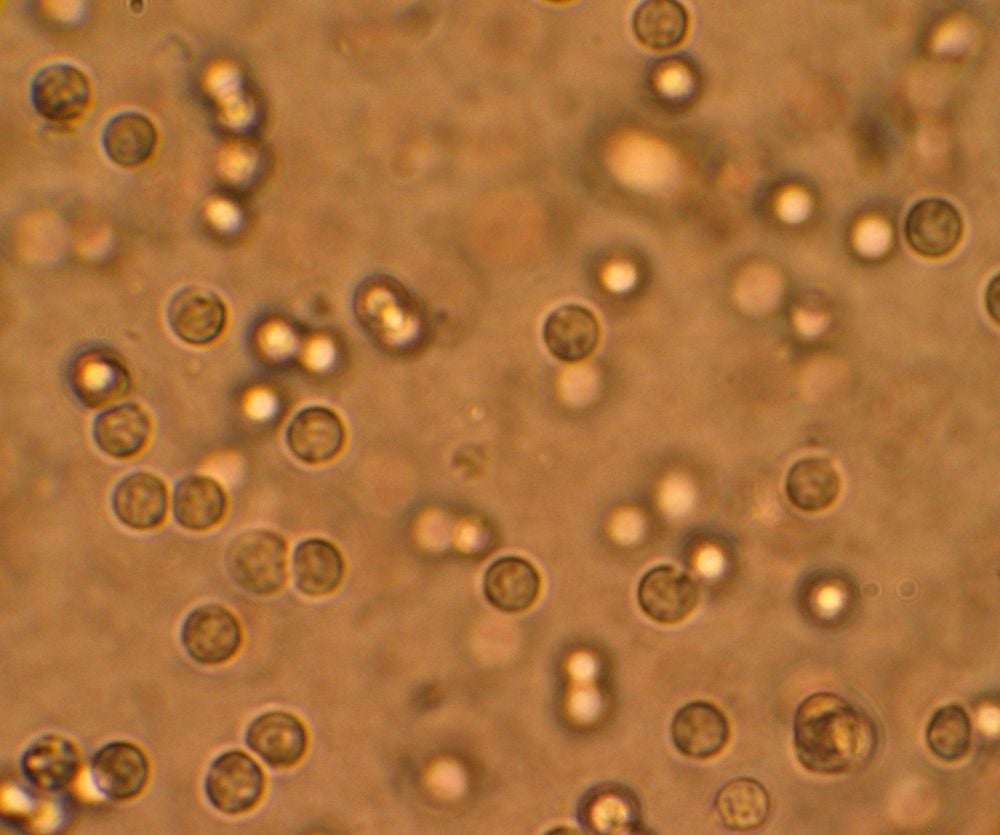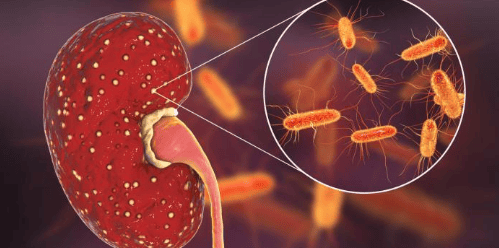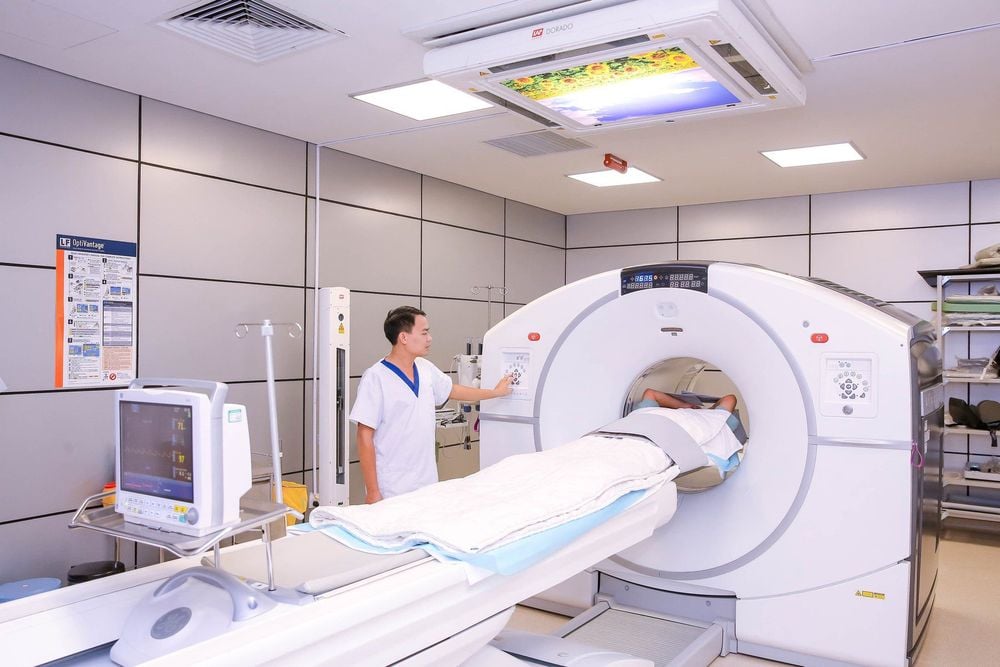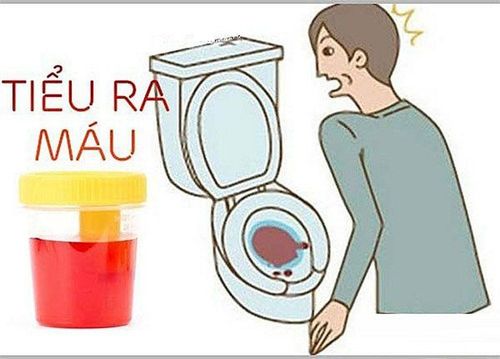This is an automatically translated article.
Urine is a liquid excreted by the kidneys and out of the body through the urethra. Depending on the different diet in each person, the color and amount of urine will be different. However, sometimes the color of the urine looks normal but the doctor diagnoses microscopic hematuria. So what is microscopic hematuria?
1. Definition of microscopic hematuria
Hematuria is blood in the urine or an abnormal number of red blood cells in the urine. Hematuria is divided into two types, macroscopic hematuria and microscopic hematuria.
In which, microscopic hematuria, also known as microscopic hematuria, is defined as hematuria but cannot be seen by the naked eye, the disease can only be detected when doing urine cytology, the results show that red blood cell count > 10,000 red blood cells/ml of urine. Most microscopic hematuria is only detected during a physical examination and a urinalysis. After identifying microscopic hematuria, the most important thing to do is to determine the cause of the bleeding, thereby determining the appropriate treatment.
2. Causes of microscopic hematuria
The human urinary tract is made up of 2 kidneys, 2 ureters, a bladder and a urethra. The kidneys are responsible for removing waste and excess water from the blood and converting them into urine. Urine immediately after being made in the 2 kidneys will flow through 2 hollow tubes called ureters to the bladder, where urine is stored until it leaves the body through the urethra.

Hình ảnh các tế bào hồng cầu trong nước tiểu được phát hiện bằng kỹ thuật nhuộm soi dưới kính hiển vi
2.1. Urinary tract infection This is a disease that affects both sexes but is especially common in women. It occurs when bacteria enter the body through the urethra and begin to multiply inside the bladder. Symptoms of a UTI often include a constant urge to urinate, pain and burning when urinating, and a very strong-smelling urine.
2.2. Kidney infections Kidney infections such as pyelonephritis can occur when bacteria enter the kidney from the bloodstream or because bacteria travel upstream from the ureter to the kidney.
2.3. Bladder or kidney stones Minerals in the urine will concentrate or sometimes precipitate, forming crystals on the walls of the kidney or bladder. Over time, the crystals will become small hard pebbles. Most bladder stones are usually painless and may not exist unless the stone is obstructing or moving. If the stone is located in the kidney, it can especially cause pain. Bladder or kidney stones can lead to both gross and microscopic hematuria.

Tình trạng viêm bể thận có thể gây tiểu ra máu
2.4. Enlarged prostate The prostate gland is located below the bladder and surrounds the upper part of the urethra. Prostate disease usually begins to develop when a man is middle-aged. When this gland enlarges, it compresses the urethra, partially obstructing the flow of urine. Symptoms include dysuria, an urgent or persistent need to urinate, sometimes with gross or microscopic bleeding. Besides, a prostate infection, also known as prostatitis, can also cause similar symptoms.
2.4. Glomerulonephritis Hematuria is a common symptom of glomerulonephritis - an inflammation of the kidney's filtering system. Glomerulonephritis may be part of a systemic disease such as diabetes, or may occur alone. The disease can be triggered by viral infections, vascular diseases, immune problems... affecting the small capillaries that filter blood in the kidneys.
2.5. Genetic disorders Anemia, a deficiency of red blood cells, can cause hematuria, both grossly and microscopically. For example, Alport syndrome affects the membranes in the glomeruli.
2.6. Medications Some drugs that can cause hematuria include: aspirin, penicillin, heparin, and the anti-cancer drug cyclophosphamide.

Thuốc Aspirin có thể gây ra tình trạng tiểu máu ở một số người bệnh
2.7. Heavy, excessive exercise It is not clear why exercise can cause red blood cells to be released in the urine. This could be due to bladder damage, dehydration or the breakdown of red blood cells during long-term exercise. Most athletes can show microscopic or even gross hematuria after an intense workout.
In fact, most hematuria has no known cause, but on the other hand it can also be a sign of something alarming.
3. Diagnosis of microscopic hematuria
3.1. Urinalysis Microscopic hematuria is first detected through a urinalysis, which can be tested again to see if the urine still contains red blood cells. If hematuria occurs only once, no further evaluation is usually needed. A urinalysis can help your doctor determine if you have a urinary tract infection or excretion of minerals that cause kidney stones.
3.2. Diagnostic imaging Almost any cause of hematuria can be examined through detailed imaging of internal organs such as: CT scan, magnetic resonance imaging (MRI) or ultrasound.

Chụp CT-scan giúp hỗ trợ chẩn đoán tiểu máu vi thể
3.3. Cystoscopy A small man equipped with a miniature camera is inserted into the bladder to examine the entire bladder and urethra.
4. Treatment of microscopic hematuria
There are 2 treatment directions that are: treatment of symptoms and treatment of causes:
4.1. Medical treatment with drugs Using hemostatic drugs: oral or intravenous transamins. Indication of blood transfusion if there is a lot of blood loss. Antibiotic treatment if there are signs of infection: Sulfamide group, Quinolone group or can be combined with other groups depending on clinical development and results of blood cultures, urine cultures. Based on the cause of the disease to combine other drugs.

Sử dụng thuốc Transamin truyền tĩnh mạch giúp điều trị đái máu vi thể
4.2. Surgical surgical treatment Some cases of severe obstruction in the urinary tract require temporary surgical intervention such as drainage, collection of blood clots in the bladder before resolving the cause of the disease.
4.3. Treatment of the cause Indications for surgical intervention depend on the cause of hematuria and the specific condition of the patient.
Microscopic hematuria is a dangerous disease and very difficult to detect, they are only detected through ultrasound and tests. Therefore, to know if you have the disease or not, you need to do a urine test or screen for urinary disease. From there, there will be directions for prevention and treatment of diseases, if any.
Currently, Vinmec International General Hospital has performed examination, treatment, prevention and surgery for many urological diseases with good results, patients' health recovered quickly. With comprehensive medical quality, a system of modern equipment, a team of qualified medical professionals will provide the best treatment for patients.
To register for examination and treatment at Vinmec International General Hospital, you can contact Vinmec Health System nationwide, or register online HERE













